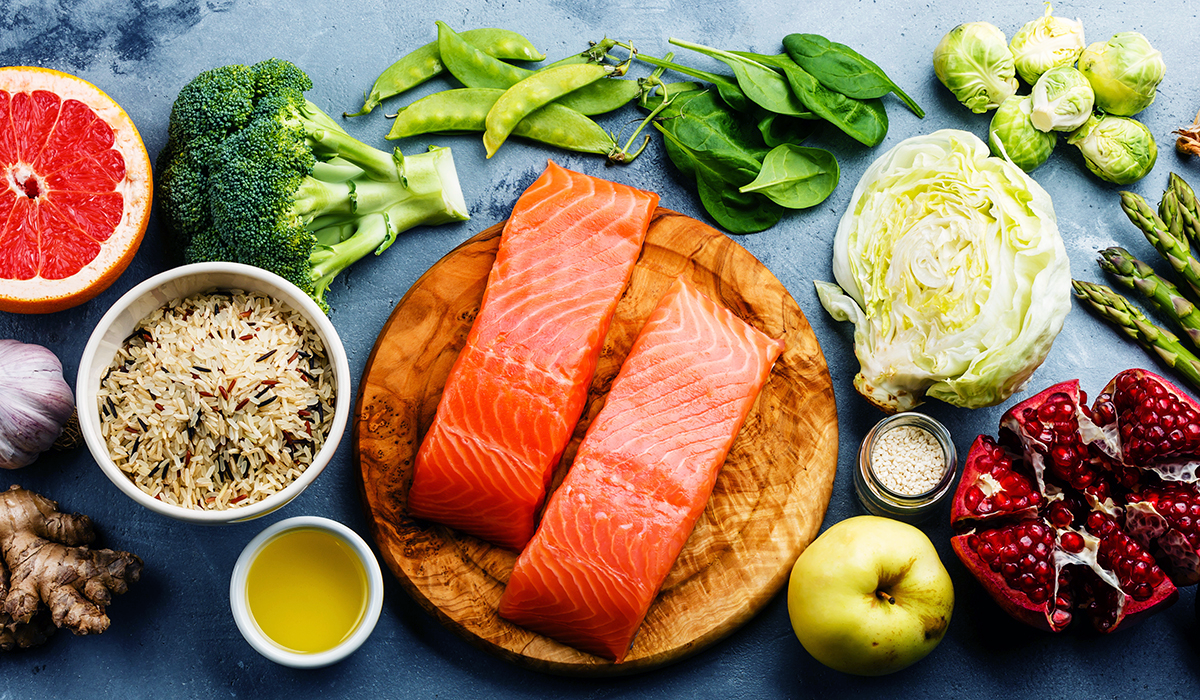Healthy Cooking
How to Incorporate More Vegetables: Delicious and Simple
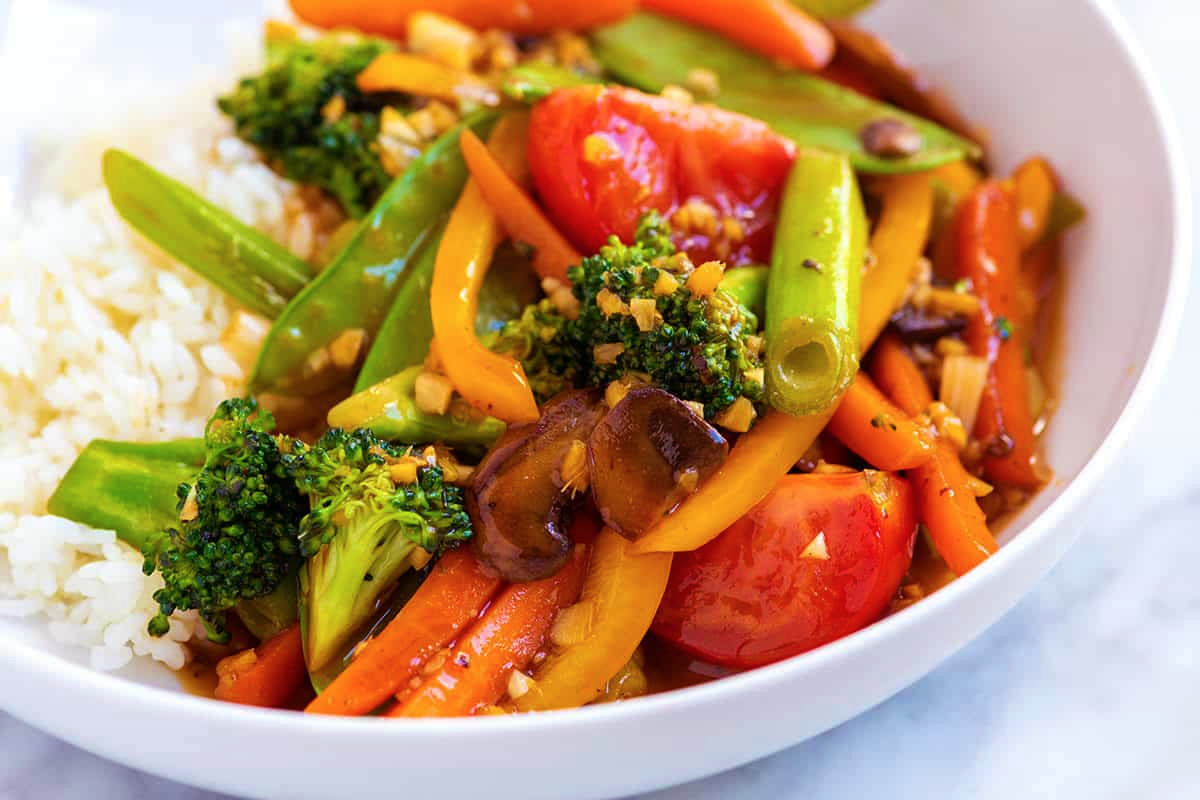
The Benefits of Eating More Vegetables
Eating more vegetables is one of the simplest and most effective ways to improve your overall health. The health benefits of vegetables are numerous and well-documented, making them an essential part of a balanced diet. But why eat more vegetables, you ask? Let’s explore the compelling reasons.
First the nutritional value of vegetables is unparalleled. Packed with essential vitamins, minerals, fiber, and antioxidants, vegetables provide the nutrients your body needs to function optimally.
They help strengthen your immune system. They also improve digestion. Plus, they lower the risk of long-term diseases like heart disease, diabetes, and some cancers.
A plant-based diet rich in vegetables can contribute to weight management. Vegetables are low in calories but high in volume due to their water and fiber content. This means you can enjoy larger portions without consuming excessive calories—keeping you full longer while supporting healthy weight loss or maintenance.
The benefits of a plant-based diet extend beyond individual health; they also positively impact our environment. By incorporating more vegetables into your meals, you’re reducing your carbon footprint and supporting sustainable food systems.
Eating more vegetables is not just about adding color to your plate; it’s about embracing a lifestyle that promotes long-term health for both you and the planet. So next time you’re planning a meal or snack, remember that reaching for those greens isn’t just good for you—it’s essential!
Easy Ways to Add Vegetables to Every Meal
Eating more vegetables doesn’t have to be a chore. In fact, there are easy and delicious ways to incorporate them into every meal of the day. Whether you’re a seasoned chef or a kitchen novice, these tips will help you add nutritious veggies to your breakfast, lunch, and dinner effortlessly.
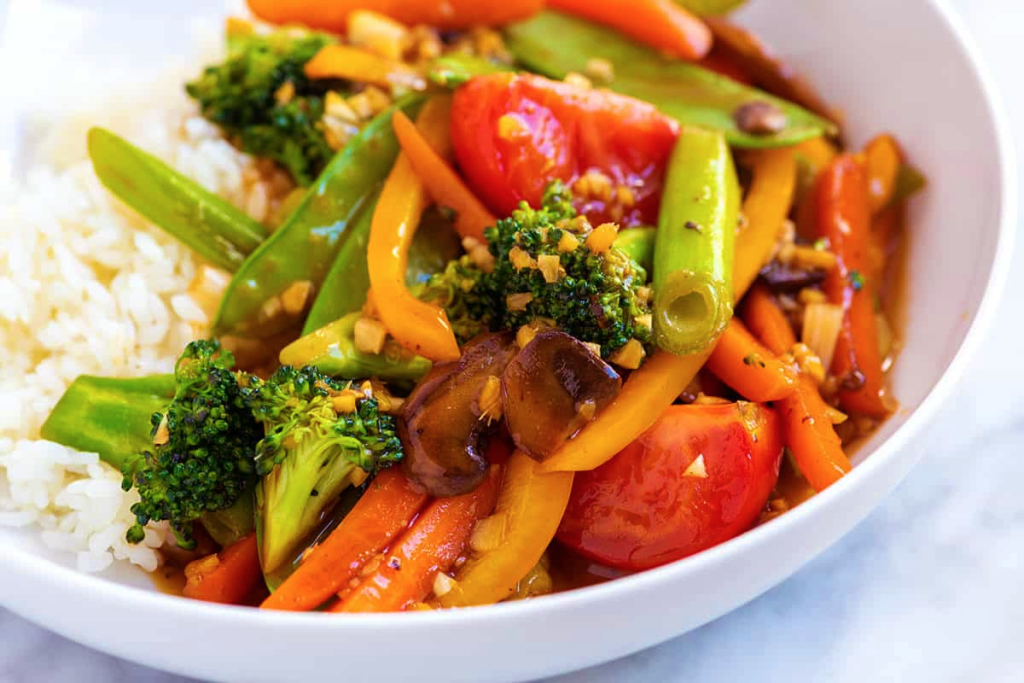
Start your day right by adding veggies to your breakfast. Consider whipping up an omelet packed with spinach, tomatoes, and bell peppers. Not only does this make for a colorful plate, but it also provides essential vitamins and minerals to kick start your morning. If you’re in a rush, blend some kale or avocado into your smoothie for an instant health boost without compromising on taste.
When it comes to lunch, think beyond the typical salad. Easy vegetable dishes like roasted veggie wraps or quinoa bowls loaded with roasted carrots, zucchini, and broccoli can be both satisfying and nutrient-rich. You can even sneak extra vegetables into classic dishes; for instance, add shredded carrots and zucchini into your pasta sauce or mix them into meatballs for added texture and flavor.
Dinner is another great opportunity to up your veggie intake. Stir-fries are incredibly versatile – simply toss together whatever vegetables you have on hand with some lean protein for a quick and healthy meal. Another option is sheet pan dinners where you roast an assortment of vegetables like sweet potatoes, Brussels sprouts, and cauliflower alongside your main protein source.
By exploring these vegetable recipes and integrating easy vegetable dishes throughout the day, you’ll find that adding veggies to breakfast, lunch, and dinner becomes second nature. With just a little creativity in the kitchen, eating healthier has never been easier – or more delicious!
Creative Snack Ideas Featuring Vegetables
When it comes to snacking, vegetables might not be the first thing that comes to mind. However, incorporating healthy vegetable snacks into your diet can be both delicious and satisfying. Here are some creative veggie snack ideas that will make you rethink your snacking habits.

First up, consider raw vegetable snacks like crunchy carrot sticks or cucumber slices. These veggies are not only low in calories but also packed with essential nutrients. Pair them with a variety of veggie dips and spreads such as hummus or tzatziki for an added burst of flavor.
Another fantastic option is to create colorful veggie skewers. Simply alternate pieces of bell peppers, cherry tomatoes, and zucchini on a skewer for a visually appealing and tasty treat. This snack is perfect for both kids and adults alike.
For those who love chips but want a healthier alternative, try baking kale or sweet potato chips at home. These homemade chips offer the same satisfying crunch without the guilt associated with traditional potato chips.
Incorporating these healthy vegetable snacks into your daily routine can help you stay energized throughout the day while also keeping your taste buds happy. So next time you’re reaching for a snack, give these veggie snack ideas a try!
Sneaky Tips for Picky Eaters: How to Make Veggies Fun and Tasty
Getting picky eaters to enjoy their vegetables can feel like a Herculean task, but with a few clever tricks, you can transform those dreaded greens into delicious delights. Here’s how you can hide vegetables in food and make them irresistible even for the fussiest eaters.
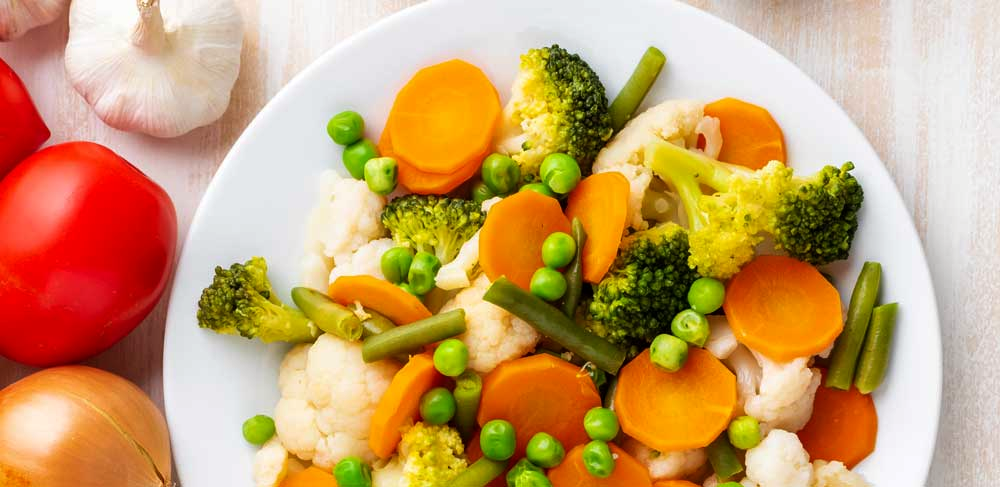
Consider kid-friendly vegetable recipes that disguise the veggies in familiar favorites. For example, blend spinach or zucchini into your homemade meatballs or spaghetti sauce. The rich flavors of the dish will mask the taste of the vegetables while adding a nutritious boost.
Another fantastic approach is making vegetables taste good by roasting them with a sprinkle of cheese or seasoning. Roasted broccoli or carrots drizzled with olive oil and topped with Parmesan become crispy treats that are hard to resist.
Think about fun ways to eat veggies by incorporating them into playful presentations. Create colorful veggie skewers with cherry tomatoes, cucumber slices, and bell peppers. Or try making veggie-packed smoothies where fruits like strawberries and bananas dominate the flavor profile while hidden spinach provides essential nutrients.
By using these clever tips to hide vegetables in meals and making them fun and tasty, even picky eaters will ask for seconds!
The Role of Meal Planning in Increasing Vegetable Intake
Adding more vegetables to your diet can seem hard, but meal planning is a great way to help you eat your greens every day. By dedicating some time each week to plan your meals, you can seamlessly integrate a variety of vegetables into your diet, making it easier and more enjoyable.
One effective approach is to create weekly meal plans with vegetables as the star ingredients. Start by selecting a diverse range of veggies that you enjoy and aim to include them in every meal. This not only adds vibrant colors and textures to your dishes but also ensures you’re getting a wide array of nutrients.
Batch cooking with vegetables is another excellent tip for boosting your veggie intake. Spend a few hours on the weekend roasting, steaming, or sautéing large quantities of vegetables that can be easily added to meals throughout the week.
Think of roasted sweet potatoes, steamed broccoli, or sautéed bell peppers. You can quickly reheat these vegetables. They can be added to salads, grain bowls, or stir-fries.
Prepping veggies ahead of time is also key. Wash, chop, and store them in airtight containers so they’re ready to go when you need them. This simple step saves time during busy weekdays and makes it much more likely that you’ll reach for those prepped veggies instead of less healthy options.
By following these meal planning tips for more veggies, you’ll find it easier than ever to increase your vegetable intake. Not only will this enhance the flavor and variety of your meals, but it will also contribute significantly to better health and well-being. So why wait? Start planning today and transform the way you eat!
The Importance of Seasonal and Local Produce for Maximum Flavor and Nutrition
When it comes to maximizing flavor and nutrition in your meals, nothing beats the benefits of seasonal and local produce. Embracing a seasonal vegetables guide can transform your culinary experiences, making every dish vibrant and nutrient-rich. But why is this approach so effective?
Seasonal vegetables are harvested at their peak ripeness, ensuring they are bursting with flavor. Unlike out-of-season produce that may be picked early and ripened artificially during transport, locally grown seasonal veggies are allowed to develop naturally. This results in a richer taste profile that can elevate any recipe.
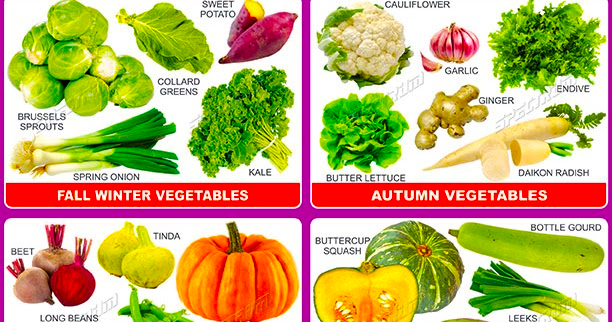
Buying local produce tips the scales in favor of nutrition. Freshly harvested fruits and vegetables retain more vitamins and minerals compared to those that endure long shipping times from distant locations. The shorter time from farm to table means you consume these foods when they are most nutritious.
Choosing the best seasonal veggies for flavor and nutrition supports local farmers and reduces your carbon footprint. This sustainable practice not only promotes environmental health but also strengthens community ties.
Incorporating a variety of seasonal vegetables into your diet is simple with a reliable guide. When you choose foods that are in season where you live, your meals will have the freshest ingredients. Next time you’re at the market, choose local, seasonal produce. It benefits your health and supports the community and environment.
Conclusion:
Commit to a Healthier Lifestyle by Incorporating More Vegetables into Your Diet Today!
Adding more vegetables to your diet is not just a choice. It is a promise to live a healthier and happier life. Vegetables are packed with essential vitamins, minerals, and antioxidants that our bodies need to function optimally. Adding colorful vegetables to your meals can strengthen your immune system, aid digestion, and improve mental clarity.
Imagine feeling more energetic throughout the day without the need for caffeine or sugar. Picture yourself enjoying clearer skin and stronger hair as a result of the nutrients found in vegetables like spinach, carrots, and bell peppers. These benefits are within reach when you make the conscious decision to prioritize vegetables in your daily diet.
It’s easier than you think! Start by adding an extra serving of greens to your lunch or dinner. Experiment with new recipes that make vegetables the star of the dish. Over time, these small changes will add up to significant health improvements.
Healthy Cooking
10 Healthy Meals Prep Recipes for People Who Hate Salad
Eating healthy Meals doesn’t have to mean endless bowls of greens. This recipe collection is packed with flavor, variety, and creativity—perfect for anyone wanting to enjoy delicious, nutritious meals without a salad!
Description: A colorful filling bowl featuring quinoa, roasted rainbow veggies, and a zesty lemon-tahini dressing. This fiber-rich powerhouse is perfect for satisfying hunger while providing a balanced mix of protein, carbs, and healthy fats.
Key Ingredients: Quinoa, roasted bell peppers, zucchini, chickpeas, and tahini dressing.
Nutritional Information (Per Serving):
Calories: 400 | Protein: 15g | Carbs: 45g | Fat: 18g
Description: This vibrant stir-fry brings tofu, broccoli, and bell peppers in a flavorful ginger-soy sauce. Quick to make and perfect for a low-carb, protein-rich meal.
Key Ingredients: Firm tofu, broccoli, cauliflower rice, soy/ginger sauce.
Nutritional Information (Per Serving):
Calories: 350 | Protein: 20g | Carbs: 15g | Fat: 16g
Description: Mediterranean-style stuffed peppers brimming with lentils, quinoa, and feta, all baked in a rich tomato sauce. Gluten-free and protein-packed—the perfect warm and hearty meal.
Key Ingredients: Bell peppers, quinoa, lentils, feta cheese, tomato sauce.
Nutritional Information (Per Serving):
Calories: 400 | Protein: 18g | Carbs: 40g | Fat: 11g
Description: Spice up your routine with these tempeh tacos wrapped in crisp lettuce leaves and topped with fresh avocado and lime-cilantro slaw. A low-carb, guilt-free meal packed with bold flavors.
Key Ingredients: Tempeh, lettuce wraps, avocado, cabbage slaw, lime dressing.
Nutritional Information (Per Serving):
Calories: 320 | Protein: 16g | Carbs: 12g | Fat: 22g
Description: A light and refreshing low-carb pasta alternative made with zucchini noodles, fresh cherry tomatoes, and fragrant basil pesto, topped with pine nuts for added crunch.
Key Ingredients: Zucchini noodles, basil pesto, cherry tomatoes, pine nuts.
Nutritional Information (Per Serving):
Calories: 250 | Protein: 7g | Carbs: 10g | Fat: 21g
Description: Roasted spiced cauliflower served with a tangy harissa yogurt sauce and fresh Greek salad. This dish is a bold, flavorful nod to Mediterranean cuisine and is entirely gluten-free and low-carb.
Key Ingredients: Cauliflower, Greek yogurt, harissa, cucumber, cherry tomatoes.
Nutritional Information (Per Serving):
Calories: 300 | Protein: 10g | Carbs: 18g | Fat: 20g
Description: A hearty combination of roasted sweet potatoes, crispy chickpeas, and a creamy avocado-lime dressing. Perfectly balanced and loaded with plant-based nutrients to fuel your day.
Key Ingredients: Sweet potatoes, chickpeas, kale, avocado-lime dressing.
Nutritional Information (Per Serving):
Calories: 420 | Protein: 12g | Carbs: 50g | Fat: 16g
Description: Cozy up with this nourishing lentil and spinach soup, lightly spiced with turmeric, for added anti-inflammatory benefits. Perfect for meal prep and highly nutritious.
Key Ingredients: Lentils, fresh spinach, turmeric, vegetable broth, garlic.
Nutritional Information (Per Serving):
Calories: 280 | Protein: 19g | Carbs: 35g | Fat: 5g
Description: A delightful, gluten-free twist on eggplant Parmesan. This dish features a crunchy quinoa crust with marinara sauce and fresh arugula.
Key Ingredients: Eggplant, cooked quinoa, Parmesan cheese, marinara sauce.
Nutritional Information (Per Serving):
Calories: 380 | Protein: 18g | Carbs: 28g | Fat: 18g
Description: Crispy, golden quesadillas filled with creamy avocado and hearty black beans, served alongside fresh salsa and guacamole. An easy, satisfying addition to your meal prep.
Key Ingredients: Corn tortillas, black beans, avocado, salsa, guacamole.
Nutritional Information (Per Serving):
Calories: 390 | Protein: 13g | Carbs: 40g | Fat: 18g
Meal Prep Tips for These Recipes
To make these recipes even easier to fit into your busy schedule, keep these meal prep tips in mind:
- Batch Cook your grains, legumes, and roasted vegetables ahead of time.
- Chop Your Veggies in advance to make assembling these dishes a breeze.
- Invest in Quality Containers to store your meals and keep them fresh throughout the week.
- Mix It Up by repurposing leftovers into different combinations to keep things exciting.
These creative recipes keep your meal prep fun, flavorful, and empowering. Healthy eating without salads? Mission accomplished!
Uncategorized
Are Factor Meals Healthy? A Comprehensive Analysis
Factor Meals has become a popular choice among busy individuals who prioritize convenience without compromising on nutrition. But are Factor meals truly healthy, and how do they stack up against similar meal service providers? This detailed guide explores the nutritional content, dietary options, and comparisons with other services to help you determine if Factor is the right fit for your lifestyle.
What Are Factor Meals?
Factor is a subscription-based meal delivery service specializing in fresh, chef-prepared meals designed to cater to various dietary preferences. Their meals arrive fully cooked, requiring just a quick microwave or oven heat-up. Known for their emphasis on health-conscious ingredients, Factor offers options for gluten-free, keto, vegetarian, and low-carb diets.
But nutritional value is what ultimately determines whether a meal is truly healthy. Let’s break it down.
Nutritional Analysis of Factor Meals
1. Total Calorie Content & Macronutrient Breakdown
Factor meals typically range from 400 to 700 calories per serving, making them suitable for those seeking balanced, calorie-conscious meals. Here’s a breakdown of macronutrient levels:
- Protein: Factor excels in high-protein meals with most meals offering 30–50 grams of protein, ideal for muscle repair and maintenance. This makes Factor particularly appealing to individuals on high-protein diets such as keto or fitness enthusiasts.
- Carbohydrates: Meals generally provide 15–35 grams of carbs, with low-carb options catering to diets like paleo or keto. Their low-carb meals are designed to help control blood sugar levels and support weight management.
- Fats: Fat content varies widely, from 20 to 45 grams, depending on the meal type. Healthy fats from sources like avocados, olive oil, and nuts are commonly used, but some higher-fat meals may not suit everyone’s health goals.
2. Fiber Content
Many Factor meals include vegetables and whole ingredients rich in fiber, with each meal delivering around 4–8 grams. While this is adequate, those requiring higher fiber intake may need to supplement their diets with additional greens or whole grains.
3. Sodium Levels
One area to watch with Factor is sodium content, which ranges between 600–1,200 mg per meal. While this is comparable to other prepared meal services, it may raise concerns for individuals managing high blood pressure or limiting sodium.
4. Vitamin & Mineral Density
Factor meals tend to be nutrient-dense, providing a variety of vitamins and minerals essential for overall health. Meals featuring leafy greens, seeds, and lean proteins often contain adequate calcium, iron, vitamin C, and B vitamins. However, as nutrient specifics aren’t listed on every meal, those with strict nutritional needs may find this limiting.
5. Added Sugars & Saturated Fat
Factor earns points for prioritizing whole foods and generally minimizing added sugars (less than 5 grams per meal). However, saturated fat levels can vary, especially in meals heavy in cheeses, cream-based sauces, or fatty cuts of meat. Most options keep saturated fat within 5–15 grams, aligning with recommended daily intake for most individuals.
6. Cholesterol Content
Cholesterol levels hover around 50–150 mg per meal, driven primarily by animal protein sources like eggs, cheese, and fatty meats. While cholesterol isn’t as much of a concern for most people as previously believed, those closely monitoring it should check individual meal labels.
Dietary Preferences and Accommodations
Factor offers a wide range of personalized dietary choices tailored to specific needs.
Gluten-Free
Factor meets Celiac-Friendly Standards and offers plenty of certified gluten-free meals, ensuring a delicious experience for those with gluten sensitivities.
Low-Carb
One of Factor’s most popular features is its focus on low-carb and keto options. Meals such as their “Keto Chicken Alfredo” are crafted to provide substantial fat and protein while staying under 20 grams of net carbs.
Vegetarian
Factor also accommodates vegetarians, with balanced plant-based options like the “Spicy Sweet Potato Bowl.” While the vegetarian meals are well-curated, the overall variety for plant-based eaters may seem limited compared to non-vegetarian menus.
Comparing Factor Meals to Other Meal Services
Nutritional Content & Portion Sizes
Compared to competitors like HelloFresh and Blue Apron, Factor prioritizes health-focused, ready-to-eat meals. Factor’s meals tend to be higher in nutrients and require no prep, whereas competitors often provide raw ingredients with less specific calorie targeting.
Factor’s portions are aptly sized for one person, with adequate proteins and veggies. However, individuals with larger appetites may find the portions on the smaller side compared to some options from Freshly or Sunbasket.
Price Comparison
Factor meals cost, on average, $11–$15 per meal, depending on the subscription plan. Here’s how this compares to similar services:
- Factor: $11–$15 per meal (fully cooked)
- HelloFresh: $8–$12 per meal (requires cooking)
- Freshly: $9–$11 per meal (fully cooked)
While Factor costs slightly more, the convenience of pre-cooked meals and diet-specific options justifies the extra expense for many customers.
Flexibility in Customization
Factor’s specialization in tailored health preferences like keto, calorie-smart, and high-protein diets sets it apart from competitors like Blue Apron or Green Chef, which cater to a broader but less custom-tailored menu.
Customer Satisfaction
Customer reviews of Factor meals frequently highlight their taste and convenience. Subscribers rave about meals like “Garlic Butter Chicken” and the “Pork Carnitas Bowl” for being delicious, satisfying, and quick to prepare.
On the downside, some users point to the high sodium content and limited menu variety for plant-based or vegetarian eaters as areas for improvement.
Are Factor Meals Healthy for YOU?
When evaluating whether Factor meals are a good fit, consider these pros and potential challenges based on your priorities.
Pros
- High in protein with well-balanced macros
- Gluten-free and low-carb options for specialized diets
- Minimal preparation effort; no cooking required
- Tasting notes included to educate and enhance your experience
- Meal variety ranges from comfort food to lighter, health-conscious options
Potential Challenges
- High sodium content in some meals
- May not fit budgets for cost-conscious customers
- Limited options for vegans or strict vegetarian diets
- Portions might feel small if you have a large appetite
Final Verdict
Factor meals are healthy overall, particularly for individuals prioritizing high-protein, nutrient-dense, low-prep meals. While they may not be ideal for those monitoring sodium intake or vegans, Factor’s curation of high-quality, health-focused ingredients makes it a standout option among meal delivery services.
Healthy Cooking
How to Make Carrot Juice Recipe at Home
Carrot juice isn’t just delicious; it’s a nutrient-packed powerhouse that can bring a vibrant burst of health to your day. Whether you’re looking for a refreshing drink or a convenient way to add more vegetables to your diet, learning to make carrot juice at home is easier than you might think. Plus, when you prepare it yourself, you have complete control over the flavor, freshness, and quality.
This guide will walk you through the benefits of carrot juice, how to make it step-by-step, and tips to help you customize and incorporate it into your healthy lifestyle.
Why Drink Carrot Juice? The Health Benefits of Carrots
Before we jump into the recipe, let’s talk about the many reasons why carrot juice has become a go-to choice for health enthusiasts and wellness advocates:
- Rich in Nutrients:
Carrots are loaded with essential vitamins and minerals. They’re a great source of vitamin A (in the form of beta carotene), vitamin C, potassium, and antioxidants, which support everything from eye health to immune function.
- Boosts Skin Health:
The beta carotene in carrots promotes glowing skin and helps prevent dryness. Drinking carrot juice may also aid in reducing acne and improving skin tone.
- Aids Digestion:
Carrot juice is hydrating and packed with fiber (when made with the pulp), which supports healthy digestion and gut health.
- Supports Immune Health:
The antioxidants in carrots help fight inflammation and protect your body from harmful free radicals. Vitamin C also gives your immune system a welcome boost.
- Improves Vision:
The age-old adage that “carrots are good for your eyes” is spot on. Carrots contribute to good vision and may help delay age-related eye disorders.
Now that you know why this vibrant orange drink is so beneficial, let’s move onto how exactly to make it at home.
How to Make Fresh Carrot Juice Recipe at Home
Creating fresh carrot juice at home is straightforward and rewarding. Here’s a step-by-step breakdown to help you create a perfectly balanced juice.
Equipment You’ll Need:
- A juicer (centrifugal or masticating works well; if you don’t have one, a blender will work too).
- Strainer/cheesecloth (if you’re blending, to separate the pulp from the juice).
- Peeler and sharp knife.
- Cutting board.
- A clean jar or glass for serving.
Ingredients:
- 4 to 6 medium-sized fresh carrots
- Optional additions like ginger, apple, lemon, or honey (more on these later)
- 1/4 cup of water (if using a blender)
Steps:
- Wash and Peel the Carrots
Rinse the carrots thoroughly under cold water to remove any dirt. Peeling is optional, but it can help remove any bitterness and improve color vibrancy.
- Chop the Carrots
Cut the carrots into smaller pieces if you’re using a blender or if your juicer has a narrower chute.
- Juice the Carrots (Using a Juicer)
Feed the carrot pieces into the juicer chute and allow it to extract the juice. Collect the juice in a container and discard the pulp (or save it for baking or cooking).
For Blender Users:
Add your chopped carrots and a splash of water to the blender. Blend on high until smooth. Then, strain the mixture through a cheesecloth or fine-mesh sieve into a bowl or jar.
- Add Flavor (Optional)
Enhance the taste with simple add-ins such as ginger for a zing, apples for natural sweetness, or a squeeze of lemon for a bright note.
- Serve and Enjoy!
Pour the prepared juice into a chilled glass and enjoy immediately for the best flavor and nutrient retention.
Tips for Choosing the Best Carrots for Juicing
The quality of your carrots determines the flavor and nutrition of your juice. Here are some tips to guide you:
- Look for Freshness:
Pick firm, bright orange carrots with no soft spots or cracks. Fresh carrots tend to yield more juice and deliver better flavor.
- Opt for Sweet Varieties:
Baby carrots and Nantes carrots are naturally sweet, making them perfect for juicing.
- Store Properly:
To keep carrots fresh for juicing, store them in the refrigerator. Keep them in a perforated plastic bag to maintain moisture while allowing air circulation.
Flavor Variations & Additions to Customize Your Juice
Carrot juice is wonderful on its own, but you can take it to the next level with these creative additions:
- Ginger:
Add a 1-inch piece of fresh ginger for a spicy kick. Ginger also has anti-inflammatory properties and aids digestion.
- Apple:
A sweet apple like Fuji or Gala provides natural sweetness and complements the earthy taste of carrots.
- Orange/Lemon:
Citrus juice enhances the flavor and adds an extra dose of vitamin C.
- Turmeric:
A pinch of turmeric adds earthy flavor along with potent anti-inflammatory benefits.
- Beets:
Add a beet for a hint of sweetness and a stunning deep red color.
- Mint:
Toss in a few mint leaves for a refreshing twist.
Nutritional Information for Carrot Juice
Homemade carrot juice is a low-calorie but nutrient-dense beverage. Here’s a quick snapshot of what you’ll find in a single serving (approx. 1 cup):
- Calories: 95
- Fiber: 2g (if some pulp is included)
- Sugar: 9g (natural, not added)
- Vitamin A (Beta Carotene): Over 100% Daily Value
- Vitamin C: 15% Daily Value
- Potassium, Vitamin K, and antioxidants
How to Incorporate Carrot Juice into a Healthy Diet
Once you’ve mastered the art of making carrot juice, the next step is incorporating it into your daily routine. Here are some ideas:
- Morning Pick-Me-Up:
Start your day with a glass of fresh carrot juice as a hydrating and rejuvenating drink.
- Post-Workout Refresher:
Replace sugary sports drinks with carrot juice. It’s natural, refreshing, and replenishes lost electrolytes.
- Smoothie Base:
Use carrot juice as a liquid base for your smoothies. Add in greens, banana, and some yogurt for an added nutritional punch.
- Cooking Ingredient:
Use carrot juice as a base for soups or in marinades for an earthy sweetness.
Frequently Asked Questions About Carrot Juice
Q1. Is it better to drink carrot juice on an empty stomach?
Yes, drinking carrot juice on an empty stomach can maximize nutrient absorption and kickstart your metabolism.
Q2. How long can fresh carrot juice be stored?
Fresh carrot juice is best consumed immediately but can be stored in an airtight container in the fridge for up to 48 hours.
Q3. Can I juice carrot tops or leaves?
Yes, carrot tops are edible and nutrient-packed! However, some people may find the flavor too strong or grassy.
Q4. Is carrot juice safe for diabetics?
Carrot juice contains natural sugars, so diabetics should consume it in moderation and consult their healthcare provider.
Enjoy the Simplicity and Health Benefits of Homemade Carrot Juice
There you have it—making fresh carrot juice at home is as simple as it is rewarding. This vibrant, nutrient-rich beverage doesn’t just taste great; it also empowers you to live a healthier lifestyle. Whether you’re drinking it plain, adding fun flavor twists, or incorporating it into your daily routine, carrot juice is a delicious way to boost your well-being.
Don’t wait to treat your body to this nutritious delight. Grab some fresh carrots today and start juicing!

 Ingredient Spotlights8 months ago
Ingredient Spotlights8 months agoSpice Bombs for Cooking: Unlock the Flavor

 World Cuisine5 months ago
World Cuisine5 months ago10 Best Recipes You Must Try in 2025

 World Cuisine8 months ago
World Cuisine8 months agoExploring the Delights of Sweet Basil Thai Cuisine

 Ingredient Spotlights8 months ago
Ingredient Spotlights8 months agoExploring the Versatility of Eggs in Cooking

 Ingredient Spotlights9 months ago
Ingredient Spotlights9 months agoCooking with Seasonal Vegetables: Fresh Meals

 World Cuisine8 months ago
World Cuisine8 months agoThe Best Chicken Hot Dogs Deserve a Spot

 Healthy Cooking8 months ago
Healthy Cooking8 months agoBoost Your Morning with Toddler Breakfast Ideas

 Basic Cooking Techniques9 months ago
Basic Cooking Techniques9 months agoThe Secret to Fluffy Rice Every Time : Perfectly Cooked Rice




